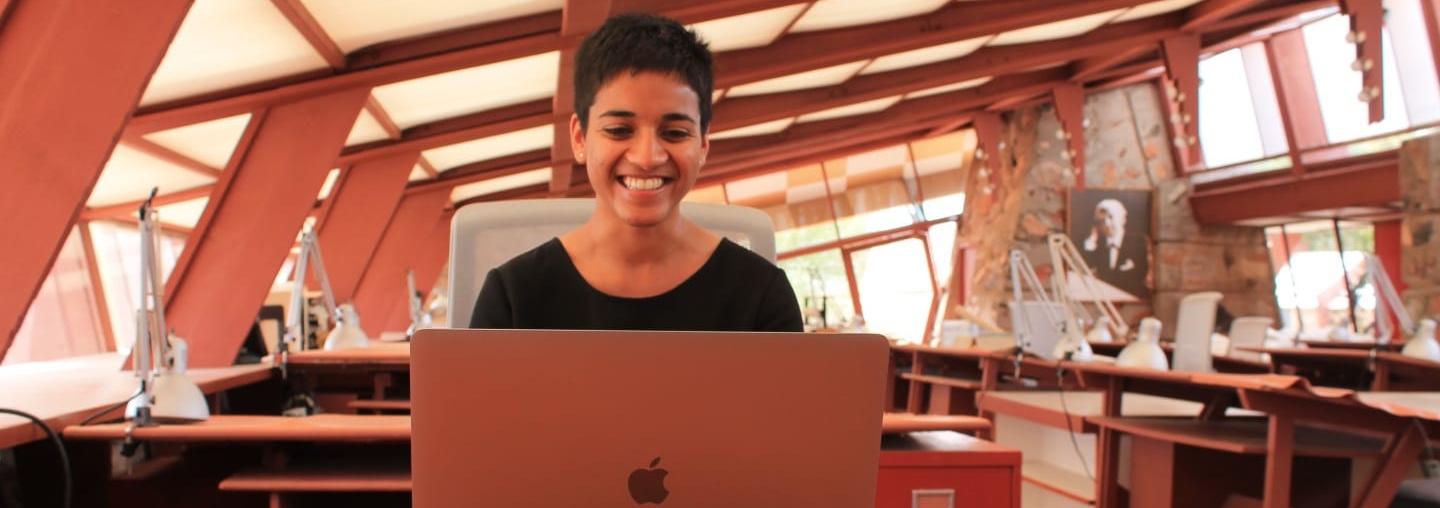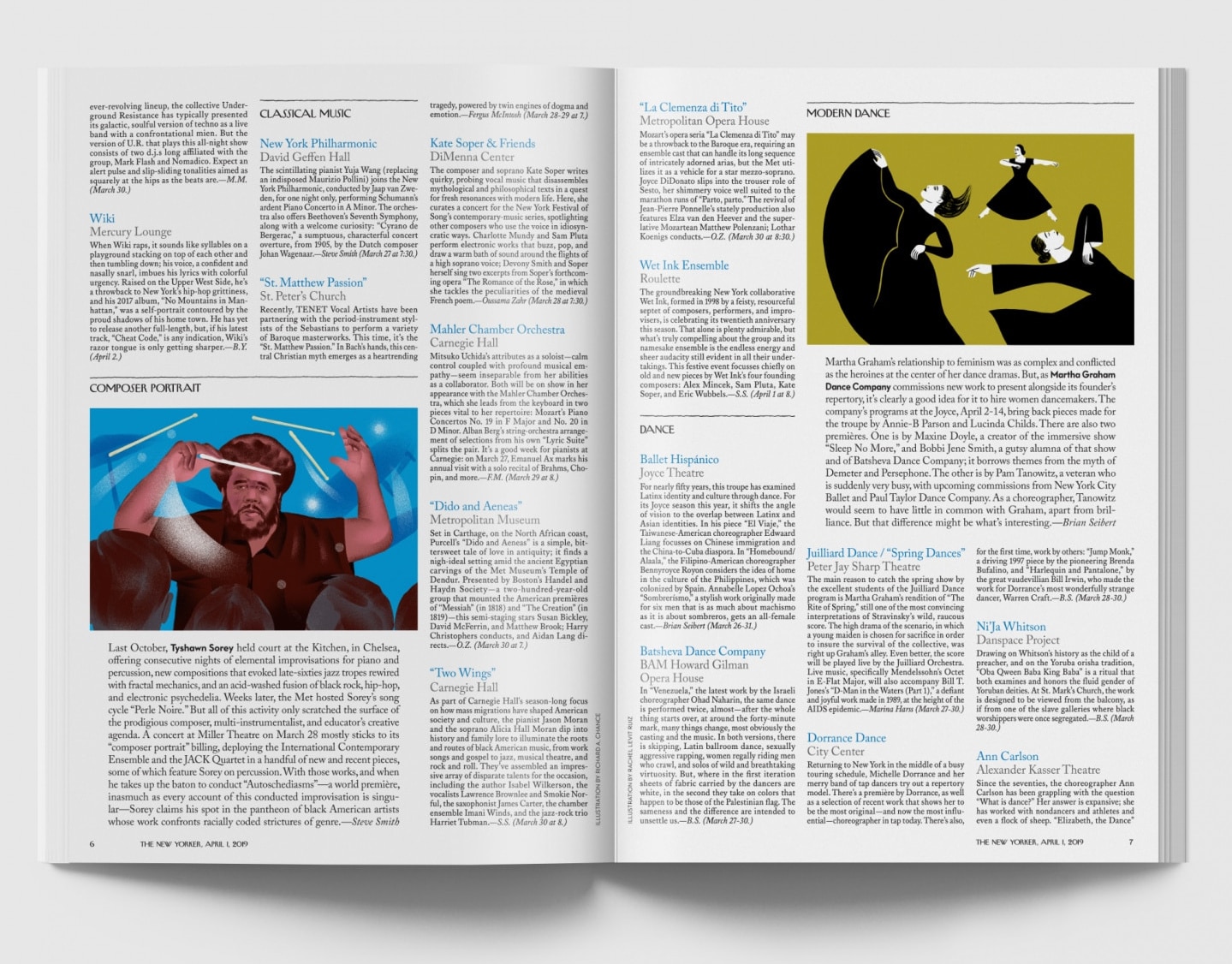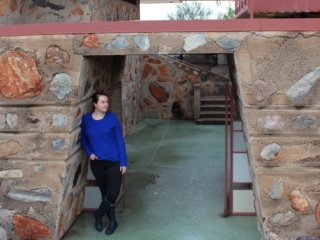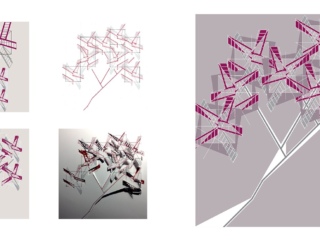
Former Graphic Design Fellow Reflects on Experiences and Shares Current Work
Neeta Patel | Jun 3, 2019
Frank Lloyd Wright Foundation 2016-2017 Graphic Design Fellow, Neeta Patel, is sharing some of the lessons she learned during the Fellowship, and how these lessons prepared her for her current position at The New Yorker.
Tell us what you’ve been up to since you left the Frank Lloyd Wright Foundation.
I finished the Frank Lloyd Wright Foundation’s Graphic Design Fellowship in late 2017 and a few months later started working at The New Yorker, within the Art Department. I mainly art direct the illustrations in the Goings on About Town section of the magazine, which is good fun. In addition, I oversee a variety of miscellaneous design tasks related to the magazine and to the New Yorker brand at large.
What have been a couple of your favorite projects you’ve worked on at The New Yorker?
That’s tough! My main duty is art directing illustrations, and every illustrator I work with is so super talented. My favorite moment every week is the morning my inbox fills up with the first color sketches from the illustrators (as opposed to the sketchy sketches we’re looking at until that point). It’s a total surprise, very exciting moment.
I also adore designing the coverflap every now and again. This is a half-page flap that wraps around the outside of the issues sold on newsstands. It features the main headlines in that issue and hopefully grabs your attention. Designing it is an exercise in typography.
What are some of the things you learned during your time at the Frank Lloyd Wright Foundation, and do you still use them in your life and work today?
So many things! I had never spent so many hours simply working with the digital tools of design — InDesign, Photoshop, etc. Many highly useful and nitty gritty skills were obtained working through every brief that landed on my desk. Then, of course, there were the skills picked up in anyone’s first collaborative office environment: how to manage projects and time, how to work with clients, how to compromise, how to stick to budgets, how to manage expectations. All this knowledge I certainly still use today and will continue to in every workplace to come. But these are just the specifics. I learned, very seriously, how to see and appreciate architecture during my time at the Foundation.

Coverflaps designed by Neeta Patel for The New Yorker.
I never studied architecture formally, so to be a part of the Foundation, to live at a place of great experimentation and architectural significance, and to coexist with the students of the School of Architecture based there, I learned by osmosis what kind of power architecture has in shaping human experience, behavior, movement, even thought. Beautiful architecture has the power to inspire. I also learned quite a lot from deep dives in the architecture library, researching for the Frank Lloyd Wright Quarterly magazine, attending lectures, living alongside the students. It was really quite enlightening.
How would you say the experience of being the Graphic Design Fellow shaped your career and life?
Well, coming out of university I sort of already knew I wanted to “do graphic design” in some form. So, the positive experience I had with the Fellowship certainly reaffirmed my interest in making things. Meanwhile, living at Taliesin West opened my eyes and my heart to the American Southwest…I grew up on the east coast and never realized how important land and space and freedom of movement and access to nature are to me. I fell in love with the desert. The Fellowship was my first gig out of university, so it naturally left a deep impression on me, and a deeply positive one, regarding the power of design and my place in its industry and discipline.

Neeta Patel art directed these illustrations (left by Richard A. Chance, right by Rachel Levit Ruiz) in the April 1, 2019 issue of The New Yorker.
What does it mean to you to have been a Graphic Design Fellow, and how do you remain connected to the Taliesin community?
Being the Graphic Design Fellow for that year was an absolute privilege! I cannot emphasize that enough. I feel so lucky, and so grateful, to have had the immense responsibility that I did, particularly with executing the design of the entire Quarterly for a year. I’m fairly convinced I wouldn’t have been given that kind of trust and opportunity right out of school elsewhere. That enormous project felt like my playground (within reason) — I was able to experiment, try new things, contribute to a rich and ongoing history. It meant everything.
I made some of the greatest friends I have out there, and I found them in my colleagues and co-residents! That was another wonderful surprise. I visit occasionally, and think of them often. I find deep joy in receiving the Quarterly now, too; it’s like a direct connection to that special place via my tiny Brooklyn mailbox.
How did being immersed in the work of Frank Lloyd Wright influence you as a designer, both professionally and personally?
Living and breathing quality architecture for a year left quite an impact on me, personally, and that surely seeps into my personal design work and interests. I pay attention to the built environment way more; lately, I’ve been back to photographing it, too. Aside from that, I remember kind of being visually stimulated by the details all the time out there. Interactions of light and shadows, the intentionality in every framed view. Like some daily encounter with a total work of art — I can’t really articulate how it influenced me directly, but I know it did.
In what ways did the Graphic Design Fellowship prepare you for the work you’re doing now?
In hindsight, it’s remarkable how much preparation the Fellowship gave me for my current position. Working on the Quarterly and with its smaller team gave me real insight into the entire production process of a print publication — everything from editorial to design to accounting to production. I watched how entire issues were built out of nascent ideas. I participated in editorial brainstorms. I learned how to search for writers and watched the editing process go down. I learned how to stick to budgets. I worked directly with editors, copy editors, the technical team at the printing press. I built the entire issue on my laptop, designed the whole thing, ordered the literal paper we printed on, then showed up on the printing floor the morning of press checks to approve the final product down to the exact Pantone shade (that swatch is forever burned into my retina).
There was really no part of the magazine-making process that I didn’t get to learn about. I started at the Foundation WAY out of my depth in terms of large-scale publishing, and by the time I arrived at The New Yorker, I had this incredibly useful pool of process-based knowledge to work off of.



